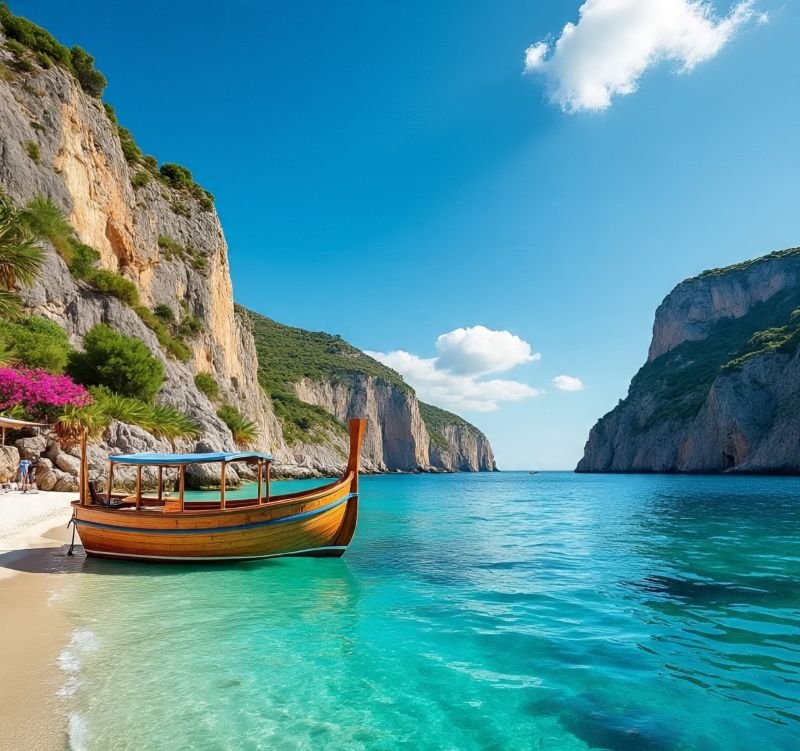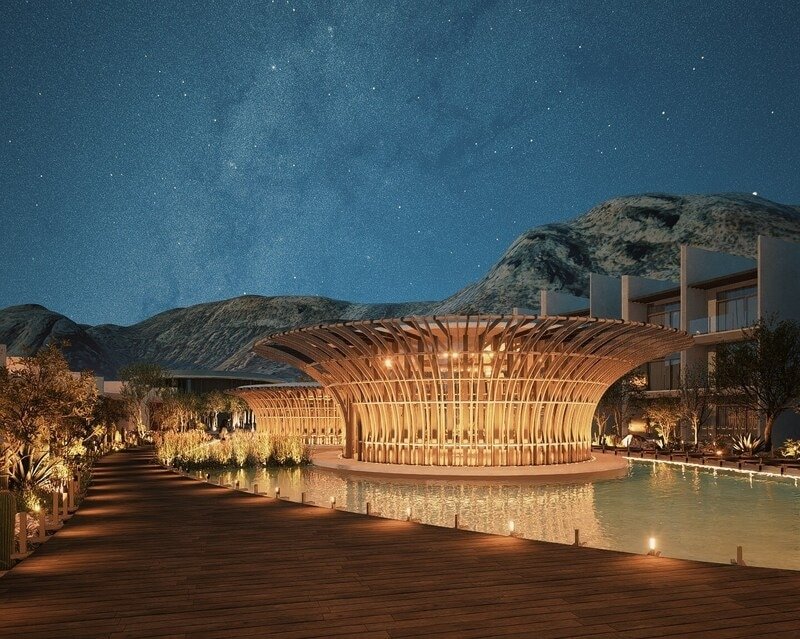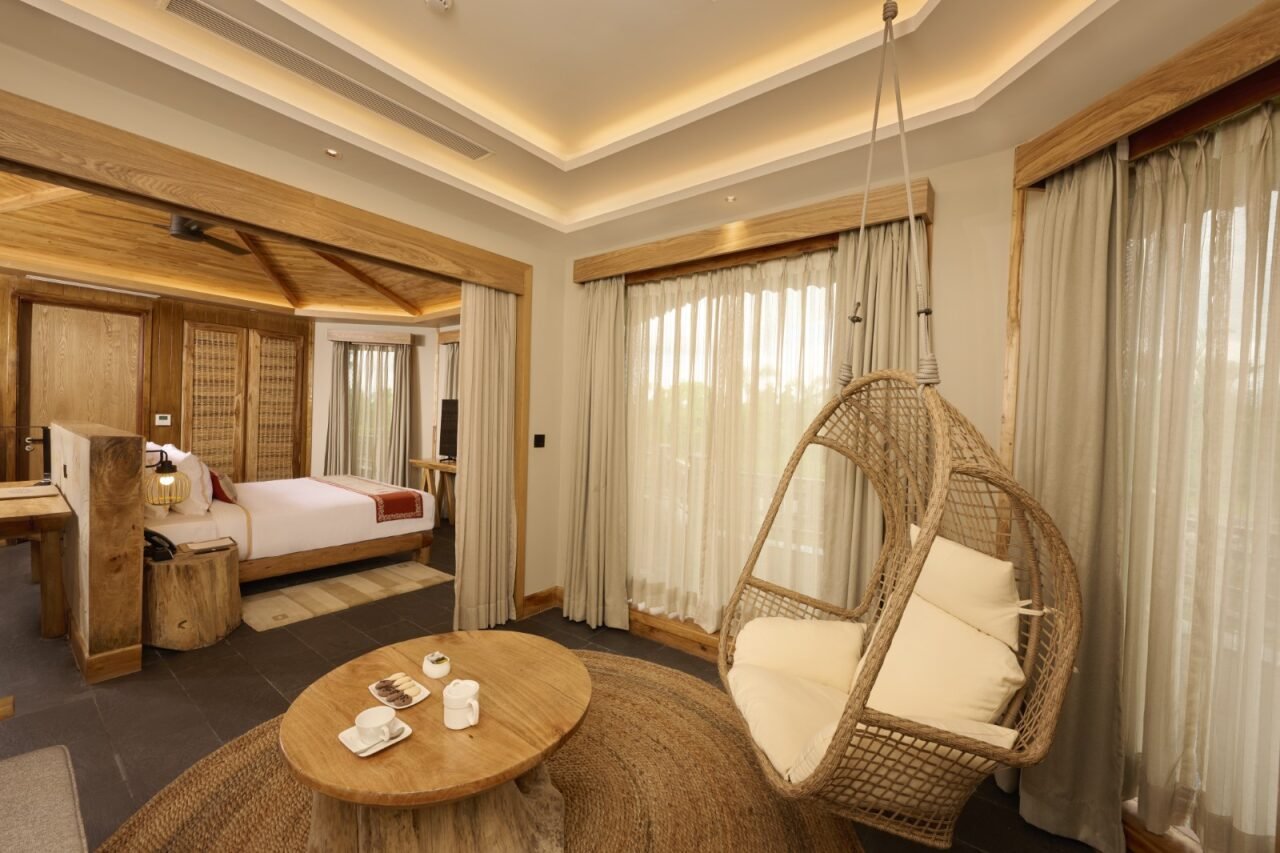Travel Trends
Chess grandmaster Magnus Carlsen wins at Esports World Cup

Number one grandmaster, Magnus Carlsen, has won the inaugural online chess competition at the Esports World Cup. The 34-year-old Norwegian will take home $250,000 (around £188,000).
The Esports World Cup (EWC) being held in Riyadh, Saudi Arabia is one of the biggest multi-discipline tournaments in competitive professional gaming.
The inclusion of chess in this year’s schedule was somewhat controversial, but the tournament’s organisers argued it counted as an esport as it is played by millions of people of all ages.
This is the second time the EWC has been staged and it comes with a total prize pot of around $70m (£50m).
Over a period of seven weeks, teams from around the world compete across 25 popular games, including Call of Duty, Street Fighter and League of Legends.
The EWC said including chess this year has seen the game reach a “new milestone”, 139 years after the first World Chess Champion was crowned.
At the Esports world cup, competitors sit at their computer on a stage in front of a live audience, wearing heart-rate monitors. Much like with traditional sport, there are large screens, big name sponsors and commentators.
A number of grandmasters took part in the online competition, which saw players go through a group stage before the top-scorers made it to the playoffs.
It was the world’s best traditional chess player who cinched the title, after beating number eight Alireza Firouzja.
Carlsen is no stranger to embracing modernity in the game. Last year, he said he would return to a major chess competition after the sport’s governing body agreed to relax its dress code.
Carlsen had quit the World Rapid and Blitz Chess Championships in New York, where he was defending his title, when he was told he could not continue playing while wearing jeans.
“It’s been an amazing show, unlike anything that I’ve seen so far,” said Carlsen after lifting the gold-plated EWC trophy.
“I really hope that this is a big part of the future for chess.
“Maybe we can get on a bigger stage next time,” he added as it had proved popular at the tournament.
Travel Trends
Othonoi, a serene Greek island just twelve miles from Corfu, is quietly rising amid booming travel trends as a peaceful alternative to mass tourism. Could this be your next escape?

Sunday, August 3, 2025
Othonoi
It was conveyed that Othonoi, a little-known island located 12 miles northwest of Corfu, where the Ionian and Adriatic Seas meet, was gradually gaining recognition as a peaceful alternative to overcrowded travel destinations. Although it covers just 3.9 square miles, it was suggested that the island’s serene ambiance and natural beauty made it stand out sharply against Corfu, which reportedly now hosts over two million tourists annually. Observers indicated that this contrast was drawing interest from travelers weary of mass tourism.
The Crowd‑Driven Shift Toward Othonoi
It was explained that tourism to Corfu had grown substantially since 2019, with international flight arrivals increasing by 32% and ferry passenger numbers rising by 31%. Such figures were interpreted not merely as proof of popularity, but also as evidence of infrastructural strain and visitor overwhelm. In direct response, travelers were described as turning toward Othonoi for its tranquil pace—reachable via a short ferry ride, the island maintained a sense of seclusion and calm that Corfu could no longer guarantee.
Mythical Resonance and Cultural Depth
The narrative reportedly emphasized that Othonoi possessed deep-rooted connections to classical mythology. It was widely regarded as the island of Ogygia, where the nymph Calypso held Odysseus captive for seven years, according to Homer’s Odyssey. It was observed that the Cave of Calypso, situated near Aspri Ammos Beach, still exists and continues to intrigue visitors with its legendary resonance. The continuing presence of cypress trees—noted by Homer for their scent—was said to evoke an ancient sensory experience, merging past and present in a unique way.
Local Character and Seasonal Dynamics
Sources indicated that despite its compact size, Othonoi was divided into two principal regions—Ano Panta and Kato Panta—with more than 20 small settlements distributed across the terrain. It was reported that Ammos, the island’s port, served as the central hub, offering modest lodging, dining, vehicle rental options, and cultural stop‑offs. Other villages mentioned, including Chorio (the capital), Dafni, and Damaskatika, were said to offer deeper insight into island life. The summer population reportedly peaked at slightly under 400 residents, while winter saw a dramatic decline—an ebb that was said to contribute significantly to the island’s reflective tranquility. Reportedly, arrival options included a ferry from Corfu, taking around three hours, or a shorter service from Agios Stefanos, lasting approximately one hour.
Secluded Beaches and Panoramic Heights
It was noted that Othonoi was home to a range of untouched coastal spots, many accessible only by boat. Among the beaches named were Molos, Kamini, Kanoula, Kontoskes, and notably Aspri Ammos, celebrated for its white sands and turquoise waters. The Cave of Calypso, again highlighted, was reported as a key convergence of myth and environment. For those inclined toward elevation and view, ascend Mount Imerovigli, the island’s highest point at 1,296 feet, which was said to provide sweeping views over both the Ionian and Adriatic Seas, as well as nearby Diapontian Islands. The climb was described as offering not just beautiful vistas, but also a potent sense of solitude and reflection.
Emerging Traveler Preferences
It was suggested that as popular destinations became more saturated, global travelers—particularly from Europe and the UK—were reorienting their priorities. Their preferences were said to include:
- Lower visitor density, enabling more personal and immersive experiences
- Cultural or historical significance, offering meaning beyond sun and sand
- Reduced environmental impact, aligning with eco-conscious values
- Authenticity over commercial spectacle
Such preferences were interpreted as part of a broader shift toward micro‑tourism, wherein travel experiences are rooted in small-scale, sustainable, and locally grounded engagement rather than mass-market packages.
Broader Industry Implications
Commentators conveyed that the quiet rise of Othonoi might be emblematic of a larger transformation in how travel is approached and marketed. It was posited that as interest in less commodified, more meaningful destinations grows, other small islands and overlooked areas worldwide may come into focus. It was proposed that nations might begin to highlight such hidden gems, promoting a more balanced tourism model that prioritizes heritage preservation, cultural respect, and slower forms of enjoyment over high-density visitor numbers.
The Symbolic Value of Thoughtful Travel
Finally, it was remarked that Othonoi could serve as a powerful symbol of what modern travel could—and perhaps should—be again. In a time when many peaceful places are being overtaken by mass tourism, Othonoi’s quiet beauty, mythological resonance, and low-impact charm were seen as representing a return to simpler, more meaningful travel. Observers asserted that as attention to such destinations quietly increased, they might inspire a new approach to global tourism—one valuing quality, cultural integrity, and community-led experiences—offering a template for a future of travel that is thoughtful, respectful, and deeply rewarding.
Travel Trends
Top 35 Travel Trends in August

At the forefront of digital innovation, Mindtrip debuts a new AI-powered mobile app, offering real-time, hyper-personalized travel guidance that adapts to users on the go. United Airlines also upgraded its app with a connecting flight-centric feature, simplifying complicated itineraries for smoother travel. Meanwhile, the luxury sector is expanding with a renewed focus on wellbeing. Marriott International’s Luxury Group launched its ‘Luxury Wellbeing Series 2025’ across top Asian destinations, while Loreto’s Mailena, debuting in late summer 2026, introduces a restorative adults-only retreat to Mexico’s Baja Peninsula.
Nostalgia is trending, too as ‘Pan Am Journeys’ by Private Air, under license from the iconic Pan American World Airways, offers retro-inspired, private air travel experiences. Similarly, Carl Friedrik’s ‘Carry-on X Core Collection’ nods to mid-century aviation aesthetics with sleek, functional design. On the water, Viking makes waves by entering the Indian river cruise market with the introduction of the ‘Viking Brahmaputra,’ bringing high-end cruising to the subcontinent. Nox, looking to the future of European rail travel, announces plans for 2027 overnight trains with private, comfort-first cabins—reshaping the night train experience.
On the lifestyle side, Four Seasons adds flair with its ‘Resort Pajamas Collection,’ while Groupe GM and Hei Poa debut a soothing, protective sun care hotel amenity line. Additionally, ‘The Cayman Club’ by Cayman Jack provides travelers with a sense of calm amid travel disruptions, and ‘Camp Unwritten’ by World of Hyatt and Reese’s Book Club invites guests to glamp with books, nature, and luxury.
Altogether, August’s travel trends reflect a traveler mindset increasingly shaped by individuality, relaxation, and meaningful escape—one that seeks not just destinations, but immersive, personal journeys.
Travel Trends
Nepal’s Royal Tulip opens Doors

In a major push to elevate Nepal’s hospitality landscape, Sarovar Hotels—part of the Louvre Hotels Group—has launched Royal Tulip Chitwan, the brand’s premium entry into the country. Situated at the edge of Chitwan National Park, a UNESCO World Heritage Site, the new resort seamlessly blends luxury, nature, and Nepali culture. The opening marks the debut of the Royal Tulip brand in Nepal and signals growing confidence in the country’s tourism potential.
Developed by KTM Hospitality (a KTM Group Holdings company), the resort spans over 4 acres and offers 65 upscale rooms and villas. Accommodation options include private Pool Villas, serene Water Villas, and unique Machan-style stays that elevate the guest experience. With a focus on nature-inspired design and top-tier comfort, the resort is positioned as an ideal destination for luxury travellers, wildlife enthusiasts, and honeymooners alike.
Royal Tulip Chitwan goes beyond just accommodation, offering world-class facilities like a luxury spa, fitness centre, swimming pool, and multiple gourmet dining options. Guests can enjoy meals at Majhighar, Forest Flame, the revolving deck Machan, or unwind at the stylish Tanavi Sports Bar. The emphasis is on immersive experiences rooted in local culture and cuisine, combined with global service standards.
Ajay K. Bakaya, Chairman of Sarovar Hotels, emphasised the strategic significance of this launch, noting Nepal’s increasing appeal among Indian and international tourists. He stated that Royal Tulip Chitwan is designed to offer a luxurious yet culturally authentic retreat. Rameshwar Shah of KTM Hospitality echoed this sentiment, highlighting the resort’s role in promoting Chitwan as a luxury eco-tourism hotspot.
With this debut, Louvre Hotels Group is expanding its South Asian footprint by targeting high-potential, experience-driven markets. Royal Tulip Chitwan is expected to become a landmark for leisure travel in Nepal, attracting guests seeking a tranquil yet luxurious escape surrounded by nature and culture.
-

 Brand Stories2 weeks ago
Brand Stories2 weeks agoBloom Hotels: A Modern Vision of Hospitality Redefining Travel
-

 Brand Stories1 week ago
Brand Stories1 week agoCheQin.ai sets a new standard for hotel booking with its AI capabilities: empowering travellers to bargain, choose the best, and book with clarity.
-

 Destinations & Things To Do2 weeks ago
Destinations & Things To Do2 weeks agoUntouched Destinations: Stunning Hidden Gems You Must Visit
-

 Destinations & Things To Do1 week ago
Destinations & Things To Do1 week agoThis Hidden Beach in India Glows at Night-But Only in One Secret Season
-

 AI in Travel2 weeks ago
AI in Travel2 weeks agoAI Travel Revolution: Must-Have Guide to the Best Experience
-

 Brand Stories4 weeks ago
Brand Stories4 weeks agoVoice AI Startup ElevenLabs Plans to Add Hubs Around the World
-

 Brand Stories3 weeks ago
Brand Stories3 weeks agoHow Elon Musk’s rogue Grok chatbot became a cautionary AI tale
-

 Asia Travel Pulse4 weeks ago
Asia Travel Pulse4 weeks agoLooking For Adventure In Asia? Here Are 7 Epic Destinations You Need To Experience At Least Once – Zee News
-

 AI in Travel4 weeks ago
AI in Travel4 weeks ago‘Will AI take my job?’ A trip to a Beijing fortune-telling bar to see what lies ahead | China
-

 Brand Stories4 weeks ago
Brand Stories4 weeks agoChatGPT — the last of the great romantics


You must be logged in to post a comment Login